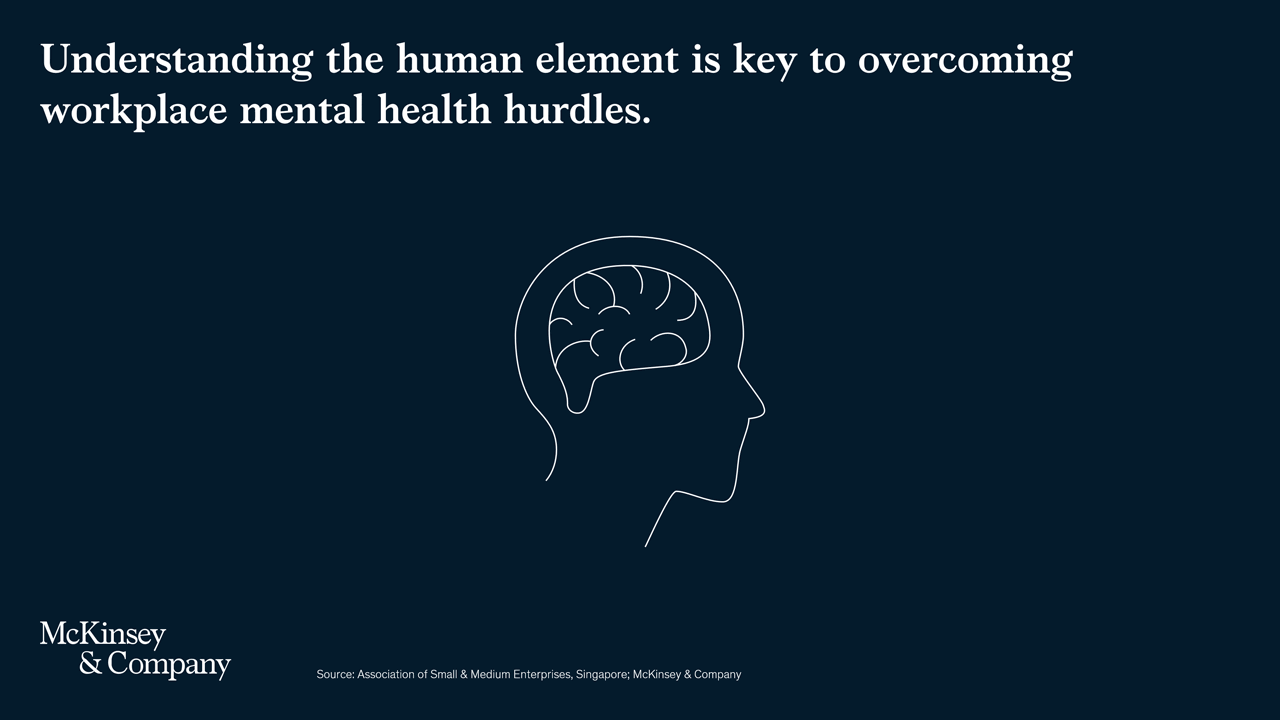Why Businesses in Asia Must Put Mental Health Front of Mind
By Oliver Tonby, Alistair Carmichael and Fiona Lander
After a year fraught with lockdowns, work-life imbalance, and a climate of fear and uncertainty, it has become clear that anyone can struggle with mental health.
The COVID-19 pandemic has shone a spotlight on mental health at work causing many organisations to step up efforts to address the structural and cultural factors, operating models, and behaviors that contribute to mental ill-health.
Far from being binary, mental health is a continuum between flourishing and languishing, with an individual’s position on the continuum at any point dependent on a wide range of environmental and personal factors.
This is borne out by data. In Australia, for example, 20% of people aged 16 to 85 experience a mental health condition in any given year. And a September 2020 survey by City Mental Health Alliance shows that one in four employees in Hong Kong experienced mental health issues in the past year.1
Mental health profoundly affects individuals, businesses and society as a whole. Individuals experiencing mental health issues miss an average of ten to 12 workdays a year and suffer 14 to 18 days of reduced productivity.
The Burden of Depression
Depression is a common mental health condition and is already the leading cause of disability globally, according to the World Health Organization. By 2030, it is forecast to be the leading cause of disease burden.

Companies and their people in Asia-Pacific continue to face particular challenges around mental health, specifically related to stigma and overwork. Singapore’s Association of Small & Medium Enterprises reported in October 2020 that 86.5% of people employed there do not seek help for mental ill-health because of the stigma surrounding it. Surveys regularly identify Asia as the region with the longest working hours, sometimes at the cost of workers’ mental and physical health.
While the costs of poor workplace mental health are high, the benefits of addressing this challenge are also clear. International research estimates a 4.25x return on every dollar spent to bolster employee mental health and job satisfaction.
Learning lessons from the past year, leading companies are bringing the issue of mental health out of the shadows and taking action to support their people’s mental well-being.
Our recent research supports such efforts by identifying factors in the workplace ecosystem that either encourage positive mental health or contribute to poor mental health. Workplace mental health differs from mental health in other contexts because of the range of factors in a workplace ecosystem that can encourage positive mental health or contribute to poor mental health. These include structural factors, cultural factors, operating models, and behaviors.
Risk factors for workplace mental health include high levels of role stress, long hours, lack of support from managers, lack of flexibility or control, and workplace bullying. The good news is that organizations can monitor such risks and take steps to address them.
Addressing the Challenges
Business leaders can address mental health outcomes across a variety of domains. Based on our experience working with leaders across geographies and sectors, we highlight five of these domains, namely: designing workplaces to minimize harm, building both organizational and individual resilience, facilitating early help-seeking, and supporting recovery and return to work.
Our recent report shares examples of how organizations are taking meaningful action to improve workplace mental health and moving mental health up the agenda:
- During the pandemic, many have enhanced flexibility by offering additional paid and unpaid time off, reduced hours or changed work patterns. Workload monitoring and dynamic rebalancing can also help minimize harm. One organization supported boundary setting with a weekly meeting-free lunch break.
- To build organizational resilience, some organizations have adopted a storytelling and check-in cascade in which leaders share stories with their direct team members and so on throughout the organization.
- One organization looking to build individual resilience started an opt-in mindfulness program for employees to regularly share their experiences and participate in evidence-based positive psychology activities.
- Organizations can support early help-seeking by raising awareness of the signs of mental ill-health, making appropriate services available, and engendering a culture that encourages asking for help. During the pandemic, one organization created a multichannel communications series focused on the experiences of working parents, including detailing typical challenges to increase awareness. Others have planned town halls to share stories, build awareness, and reduce stigma.
- To help its people recover from mental health issues experienced during the pandemic and as they return to work, one organization arranged preferential, subsidized access to psychologists for its top 300 leaders. Some employers have offered five days of additional “pandemic leave” on a no-questions-asked basis.
Who is driving the change is critical. Change is best led and supported from the top and not treated as a collection of programs owned by Human Resources departments. Workplace mental health best practices should be integrated into all elements of a company’s operating model. Doing so means bringing together workplace mental health research, deep organizational design and change expertise, and a perspective that puts values first.
1 This and other Asia-Pacific statistics mentioned were featured in the article Challenges for Employers in Asia-Pacific: Stigma and Overwork (Forbes, February 2021)
